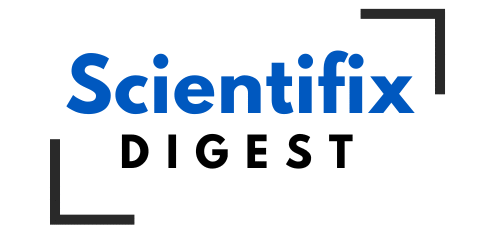Mitochondrial diseases affect approximately 1 in 5,000 individuals, often resulting in severe, life-limiting conditions like neurological decline, metabolic failure, and muscle weakness. These disorders stem from mutations in mitochondrial DNA (mtDNA), the unique genetic material found within the energy-producing powerhouses of cells. Unlike nuclear DNA, mtDNA is inherited maternally and exists in multiple copies per cell, making genetic correction exceptionally challenging.
Until now, no effective tools existed to directly and precisely correct these mitochondrial mutations in living cells—until a groundbreaking new study in PLOS Biology introduced a promising method of precision mitochondrial gene editing .
The Breakthrough: Mitochondrial Base Editing with DdCBEs
Researchers have developed and successfully used DddA-derived cytosine base editors (DdCBEs) to precisely correct mtDNA mutations in patient-derived cells. Unlike traditional CRISPR systems, which struggle in mitochondrial environments, these base editors operate without creating double-strand DNA breaks or requiring guide RNAs—making them safer and more adaptable.
Key Successes of the Study
Mutation Correction in Liver Organoids: The team edited the m.15150 G>A mutation in the MT-CYB gene, which affects the mitochondrial cytochrome b protein involved in the electron transport chain. The corrected liver organoids showed significant reductions in ATP production, confirming both edit accuracy and functional impact.
Editing in Patient-Derived Fibroblasts: Researchers also corrected the m.4291 T>C mutation in the MT-TI gene (tRNA isoleucine) from fibroblasts of a patient with mitochondrial disease. Editing efficiencies varied across cell types but reached up to 40% correction in certain clones.
Efficient LNP Delivery: The use of lipid nanoparticle (LNP) delivery systems for modRNA-based base editors allowed for over 90% transfection efficiency in fibroblasts—paving the way for in vivo applications without using viral vectors.
Why It Matters: A New Era in Precision Medicine
The ability to correct mtDNA mutations directly in human cells opens the door to curative therapies for dozens of incurable mitochondrial disorders. This technology holds potential to:
Restore proper energy production in cells
Halt progression of genetic diseases like Leigh Syndrome or MELAS
Avoid the toxicities associated with viral gene delivery
Provide patient-specific therapies using stem cell-derived organoids
Because DdCBEs are highly specific and avoid inducing harmful double-strand breaks, they present a safer alternative to traditional gene-editing techniques.
Scientific Innovation Meets Real-World Application
A standout feature of this research is its dual demonstration in both liver organoids and primary human cells—meaning the findings are not just theoretical, but potentially applicable in clinical settings. Organoids serve as near-identical models of real human tissues, making them ideal for testing gene therapies before human trials.
Moreover, the use of LNP-modRNA delivery makes the system highly scalable. Unlike viral approaches, LNP delivery can be repeated, dose-adjusted, and applied to a broader range of tissues with fewer long-term risks.
Broader Implications: Beyond Mitochondria
Mitochondrial dysfunction isn’t just limited to genetic disease—it plays a role in aging, neurodegeneration, and even conditions like ADHD and autism. In fact, retinal imaging studies (like those exploring ADHD) often reveal mitochondrial-related patterns, suggesting cross-talk between CNS health and mitochondrial activity.
This makes the current study not only a landmark for rare disease treatment but also a stepping stone toward broader biomedical applications.
5 Lifestyle Habits to Boost Mitochondrial Health
While gene editing advances, everyday choices can help preserve mitochondrial function. Here are science-backed lifestyle practices to support your cellular energy system:
Eat Mitochondrial Superfoods
Incorporate spinach, avocados, and fatty fish rich in CoQ10 and omega-3s, which protect mitochondrial membranes and enhance ATP production.
Practice Intermittent Fasting
Periodic fasting can boost mitochondrial biogenesis and reduce oxidative stress, improving cellular efficiency.
Get Quality Sleep
7–8 hours per night helps mitochondria repair and maintain energy production—especially critical in the brain and muscles.
Exercise Regularly
High-intensity interval training (HIIT) stimulates mitochondrial growth and increases oxygen utilization.
Manage Stress
Chronic stress elevates cortisol and damages mitochondrial DNA. Mindfulness, yoga, or even a daily nature walk helps lower inflammation and improve mitochondrial resilience.

Looking Ahead: What’s Next for Mitochondrial Gene Editing?
This study is a major leap forward, but several hurdles remain:
Safety trials must assess long-term effects of base editing in human tissues.
Target expansion is needed to address other mtDNA mutations beyond those tested.
Clinical translation will require partnerships between biotech firms and hospitals to scale up delivery mechanisms and navigate regulatory approvals.
If successful, mitochondrial base editing may eventually provide not just a treatment, but a cure for genetic mitochondrial disorders—and inspire similar advances in neurodegenerative diseases, metabolic disorders, and age-related conditions.
Final Thoughts
The use of mitochondrial base editors to precisely correct disease-causing mutations is more than a technical achievement—it’s a milestone in the evolution of precision medicine. With safer delivery platforms, accurate gene targeting, and growing proof of functional recovery, the future of mitochondrial health looks increasingly hopeful.
References
Joore IP, Shehata S, Muffels I, et al. (2025) Correction of pathogenic mitochondrial DNA in patient-derived disease models using mitochondrial base editors. PLoS Biol 23(6): e3003207. DOI: 10.1371/journal.pbio.3003207.
Resources:
Mitochondrial Disease Foundation: www.umdf.org
CRISPR and Base Editing Advances: Nature Reviews Genetics

